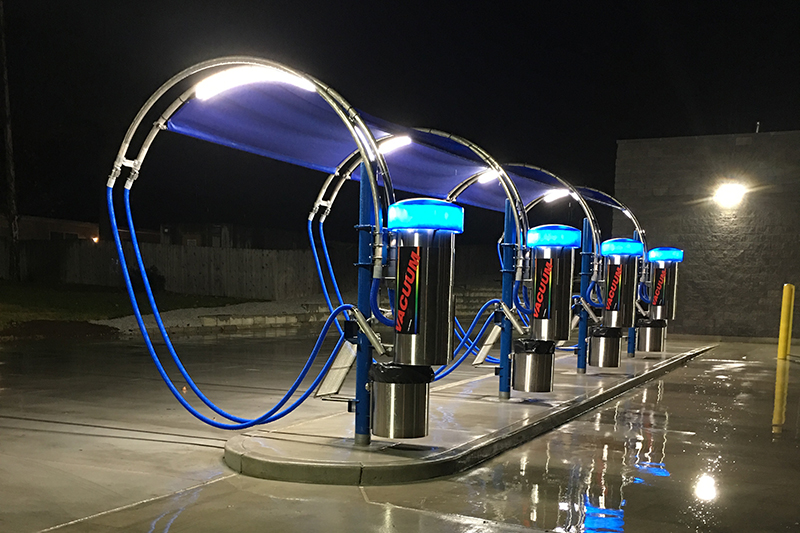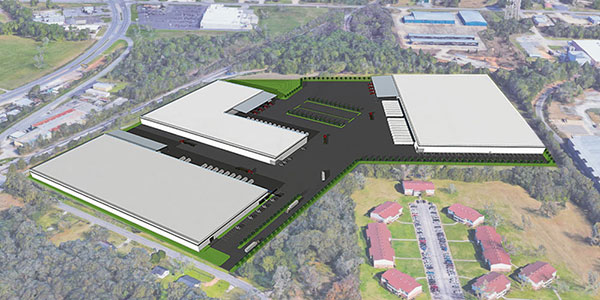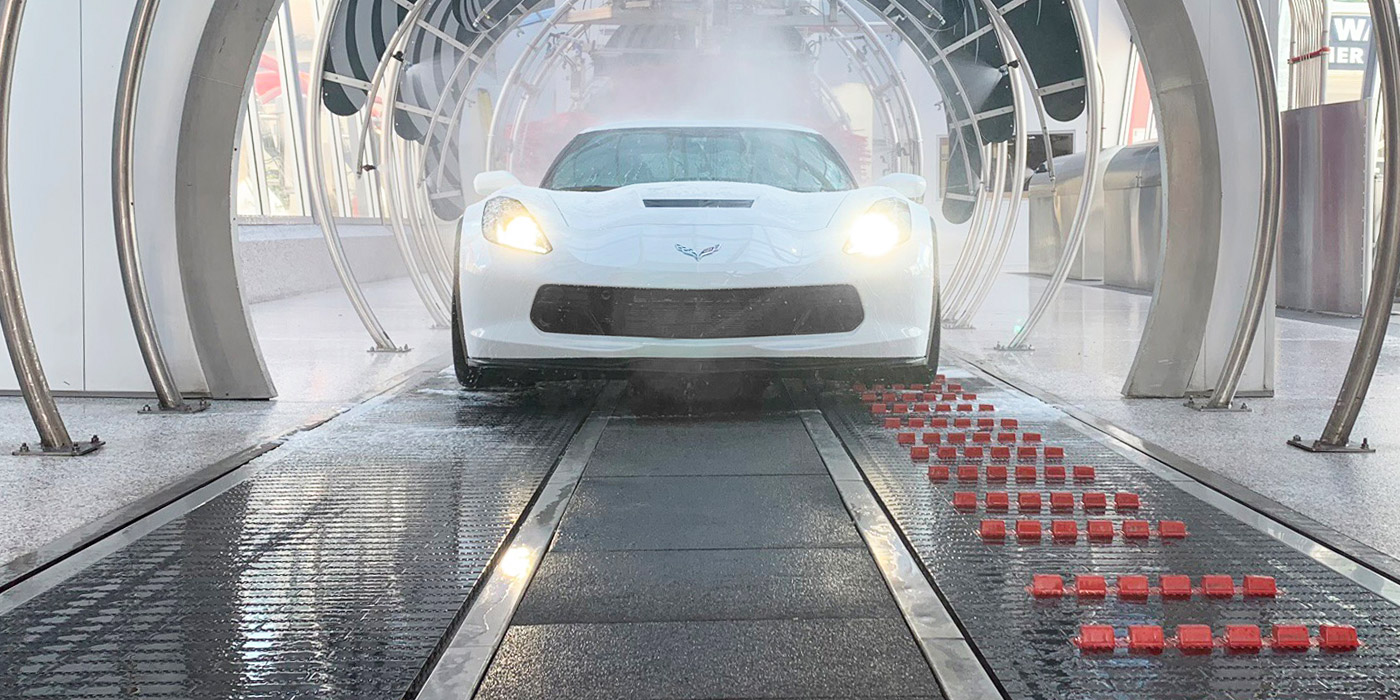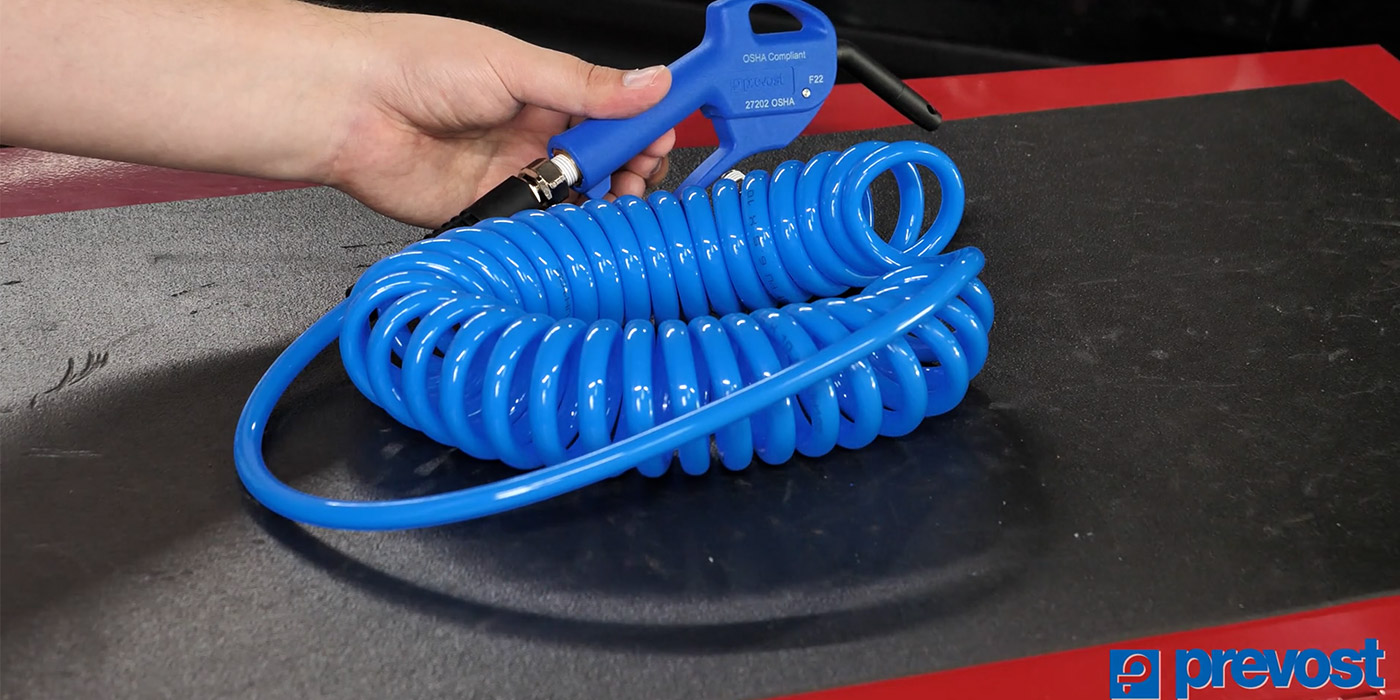For customers, cleaning the inside of the car is just as important as cleaning the outside of it. For that reason, vacuums play a critical role at a carwash, and often, their footprint on the lot highlights that. At an express carwash, for example, the vacuum area can easily take up around half of the lot.
With such a valuable tool and that much space, it’s critical that you use it to your advantage. Whether you have a tunnel carwash, an in-bay automatic (IBA) or a self-serve, your vacuum area can tell customers a lot about your business and determine whether they will return.
Creating appeal
“Aesthetically, looks are an important part of the invitation to the carwash,” says Wes Taggart, CEO and principle of AutoVac. “Sometimes, the focus is simply on the inside of the tunnel and/or building exterior, but the remainder of the carwash site must be appealing to that new and existing user.”
Remember, your vacuums take up a significant part of your site, so you should be just as invested in making them attractive as you are in making the rest of the property appealing. Based on what industry experts have told us, there are three key areas you should focus on when using your vacuums to create appeal:
- Vacuum setup
- Lighting
- Signage and decals.
Vacuum setup
Jennifer Wall, sales and marketing manager for J.E. Adams Industries, notes that stanchions (also known as vacuum arches) with canopies draw attention to the vacuums and provide a crisp, clean look to the site. While vacuum arches are growing more in popularity at express tunnel carwashes, IBAs and self-serves can benefit from having canopies over their vacuum stations as well.
After all, not only do canopies look attractive, but they provide shade on hot summer days as well as protection from the elements, such as wind and those stray showers that sometimes catch customers unaware.
Taggart advises that the same color scheme be used throughout the vacuum arches/canopy and tie in with the rest of the carwash — something he says is often forgotten.
While arches and canopies will stand out and attract customers from the road onto the lot, you can’t just stop there. After all, it’s what customers find when attending the vacuum stations that will help determine if they return or not.
First of all, the vacuums themselves can be a draw. While central vacuums are now standard at express carwashes and generally offer just a hose and nozzle, IBA and self-serve locations also have an opportunity to market additional services.
“Being market aware is key,” Wall says. “Meaning, are you charging a fair rate compared to other locations in your area? Are your vacuums two-motor or three-motor, and what are others using? Are they offering combination units that have shampoo/spot, fragrance, tire shine or air?”
Convenience is key for customers. Just as it is convenient for a standalone vacuum to offer several services, it is also convenient for a vacuum station (no matter the type of carwash) to have other useful items nearby.
For instance, place trash receptacles and mat holders at each station. Mat holders allow customers to be able to vacuum mats easily or set them aside without having to juggle vacuum hoses and mats in their arms or put mats on the dirty asphalt.
“Mat holders … keep customers from simply banging their mats on vacuum arches, the ground beside them or the building in front of them,” Taggart adds. In addition, invest in some mat cleaning machines, but make sure they are situated nearby so that customers can easily find them.
Lighting
“In my opinion, lighting is now the single most important aspect for the customer in the vacuum area,” asserts Stuart Levy, president of Clean Car Consulting.
Levy adds that good lighting not only allows customers to see what they are doing, but it also makes them, particularly women, feel safer.
Lighting can be incorporated into canopies, arches or even vacuum domes.
Taggart notes, “It’s inviting, it’s security, it’s a courtesy and it’s advertising for the carwash site at night — and inexpensive these days due to today’s LED technology.”
Signage and decals
One popular way for express washes to market themselves on either vacuum canopies or other signage is by posting the words “FREE VACUUMS” where they will be visible to motorists. Taggart says that this simple signage is a great and easy way to pull in traffic from the street, especially if your competition does not offer this currently almost-expected service.
As far as IBAs and self-serves are concerned, it’s all about keeping your decals fresh. A small investment in sprucing up your vacuums keeps them looking attractive to customers and will make them more apt to return. “Decals, hoses and lighted domes all fade over time,” Wall notes. “We have numerous customers with 15- to 20-year-old vacs that they replace the decals on every five to eight years, and their customers always comment on the great ‘new’ vacuums they got.”
Furthermore, vacuum areas provide other opportunities for signage. For instance, there are signs designed specifically for vacuum domes that can advertise other services at your carwash, such as memberships. In addition, it’s always a good idea to put up signs reminding customers about some of the rules of vacuuming etiquette.
Proper vacuum maintenance and usage
Another part of a vacuum’s appeal is how well it works. “Customers notice when one site’s vacuums work better than another,” Wall states. “Keeping them well-maintained and replacing old, faded decals can go a long way. Vacuums are built to last, but cosmetic items will need to be replaced over time to keep up the appearance matching the performance.”
As far as non-cosmetic maintenance goes, you need to check that the suction remains consistent among all vacuums. And, for standalone vacuums, you need to be sure coin boxes are emptied regularly to help avoid any technical delays.
However, another aspect of maintenance lies in handling equipment correctly — something largely in the customer’s hands. “Get the customers used to not abusing the vacuum system; train them on how to use it correctly,” Taggart adds. For example, you can place signs around your vacuum stations, detailing an explicit list of proper vacuum usage, such as these that Wall recommends:
- Hang the hose up after use
- Don’t vacuum liquids or small, solid objects, such as straws, wrappers, pencils, etc.
- If applicable, follow the instructions on the front of the machine
- Notify the owner of any issues.
Of particular importance in this list is returning the hose to its holster. Not only does it look messy when left lying down, but there are other psychological and practical reasons to keep it hung up as well. For instance, Levy notes, “A hose lying on the ground becomes dirty. Who wants to drag a dirty vacuum hose through their car?” In addition, Taggart says that hanging hoses up makes it easier for subsequent customers to find them and extends the life of the hoses by preventing them from being run over. Putting hoses up also reduces the noise on the lot.
Speaking of noise, Taggart also suggests asking customers to control their music. Some customers like to play music as they vacuum, which can get loud, and since everyone’s tastes and selections are different, it can bother other customers, especially those who are looking for some peace and quiet.
Of course, while you should encourage customers to treat the vacuums properly and throw their trash into the bins, it’s your responsibility to keep up where they fall short and to put everything to rights on the property.
“You are in the clean car business,” Levy states. “This means that every aspect of your location must be kept clean. An employee should be assigned, on a rotating basis, to police the area, especially on busy days. It is well worth the expense.” This policing will include picking vacuum hoses up off the ground, emptying trash cans, picking up stray litter and so on.
Litter is particularly a problem for the appearance of an IBA/self-serve carwash simply because of the usual vacuum location. “In the past, the vacuum areas have always been located before the entrance to the wash bay or IBA unit,” Levy explains. “Unfortunately, these areas are now primary trash areas and can be very unsightly. Fifty-five-gallon drums holding trash are filled to the brim. The ground is littered with trash as well.” For this reason, Levy states that laying out a site so that customers can vacuum after they wash may help this problem.
Layout and traffic flow
“It’s actually an attraction to see a busy carwash as a customer,” Taggart declares. “It makes you think and believe that the provided service is great and worth your stop.”
However, a busy carwash site can quickly turn from a marketing dream into a marketing nightmare if the layout of the wash is not set up for ideal traffic flow.
Levy states, “In today’s express market, if the consumer has to pass the vacuum area as they pull onto the property but does not have access to it, the area can become an important tool to enhance customer satisfaction. The layout of the wash has a specific flow that shows the customer what services are available to them after their vehicle is cleaned. In order to exit, they must go past the vacuum area. Usually, this is a busy area and psychologically makes the customer feel good about the location.”
However, the vacuum area needs two major components to be successful: enough vacuum drops/stations to accommodate an influx of customers on busy days and enough room for customers to be able to easily pull in and out of the vacuum stations.
Having enough vacuums is the best way to keep the flow going on a busy day. “This is the reason so many new carwashes today are putting in so many drops. They want to make sure a drop space is always available for their customers,” Levy continues.
Furthermore, if customers have difficulty entering and exiting vacuum stations, this layout will be a strong deterrent and a traffic mess on busy days. In general, turning radiuses are the primary component of poor carwash site design, and if customers are having to make three-point turns anywhere on the lot, they are going to find it an annoyance.
Of course, if a carwash advertises having free vacuums, it may encourage motorists to stop in and simply use the vacuums without paying for a carwash, especially if the site layout allows for it. That being said, there are valid arguments on both sides for giving away free vacuums. For instance, some experts argue that by allowing customers to use vacuums without purchasing a wash, you are not actually losing any money, since the vacuums are always running. However, since those customers are already used to coming to your business to use the vacuums, they are more likely to return when they actually need a carwash.
Related: Free vacuums versus pay vacuums
Nevertheless, if you worry about “non-customers” taking up these spots or even customers in general taking too long at these free vacuum spots, there are ways to get around that.
“With today’s technology, we now offer timed vacuum uses with a central system,” Taggart explains. “A metered central vacuum system is also available in carwashes today. These advents discourage those who did not pay for a wash to come in and use the vacuums for free.”
Whether you offer them for free or not, vacuums are such critical equipment to a carwash that, using just a few strategies, you can get them to suck in drivers off the street and turn them into loyal customers.














